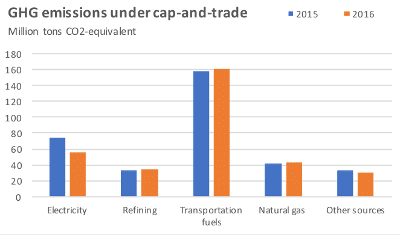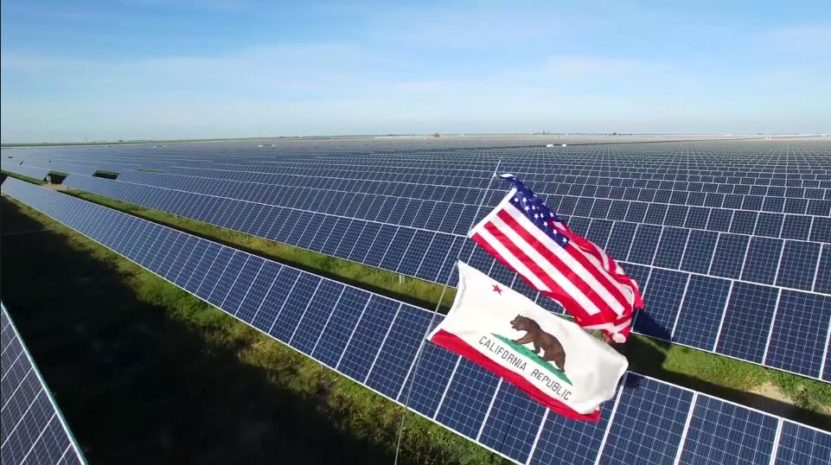It has become an article of faith by many proponents of the nuclear industry that the move to renewable energy has not resulted in significant greenhouse gas reductions. This argument has been advanced widely in the English-speaking media, including in articles in the New York Times.
But as widely printed as this claim is, it is still incorrect. The latest data to this effect comes from a research note by the organization Near Zero, which finds that California’s greenhouse gas emissions fell nearly 5% in 2016 alone, with the vast majority of these gains in the state’s electricity sector.
As pv magazine has reported before, increasing deployment of wind and solar has been driving lower use of natural gas, which represents that vast majority of fossil fuel use in the electricity sector. Additionally wet weather in 2016 meant very high levels of hydroelectric generation, together meaning that California was able to meet nearly a third of electricity demand with in-state renewables over the first nine months of the year.
These trends have increased in 2017, given the extremely wet weather in the winter.
Another trend identified in the Near Zero report is that California’s electricity sales declined, which it credits to a combination of energy efficiency and growth of solar PV and other behind-the-meter technologies.
 However, as greenhouse gas reductions from electricity plummeted, emissions from the state’s other sectors – most notably transportation and petroleum refining – increased slightly, which Near Zero says demonstrates that the state’s cap-and-trade program is not driving emissions reductions.
However, as greenhouse gas reductions from electricity plummeted, emissions from the state’s other sectors – most notably transportation and petroleum refining – increased slightly, which Near Zero says demonstrates that the state’s cap-and-trade program is not driving emissions reductions.
Near Zero attributes this lack of progress to several factors, including annual program limits that are set above allowance levels, and a dubious future to the program before the passage of legislation in July 2017. Additionally there is the fact that emissions reductions were almost entirely in electricity generation.
“The impact of the market’s explicit carbon price is likely limited because the reductions observed in MRR emissions largely occurred in sectors that are not responsive to California’s modest carbon price,” notes the report.
“The growth in renewable energy is driven largely by nonpricing policies, such as procurement of utility-scale projects under the state Renewable Portfolio Standard and deployment of behind-the-meter resources that are eligible for the state’s Net Energy Metering policy. Any reduced demand from energy efficiency policies is similarly unlikely to be affected by carbon pricing.”
This content is protected by copyright and may not be reused. If you want to cooperate with us and would like to reuse some of our content, please contact: editors@pv-magazine.com.









By submitting this form you agree to pv magazine using your data for the purposes of publishing your comment.
Your personal data will only be disclosed or otherwise transmitted to third parties for the purposes of spam filtering or if this is necessary for technical maintenance of the website. Any other transfer to third parties will not take place unless this is justified on the basis of applicable data protection regulations or if pv magazine is legally obliged to do so.
You may revoke this consent at any time with effect for the future, in which case your personal data will be deleted immediately. Otherwise, your data will be deleted if pv magazine has processed your request or the purpose of data storage is fulfilled.
Further information on data privacy can be found in our Data Protection Policy.